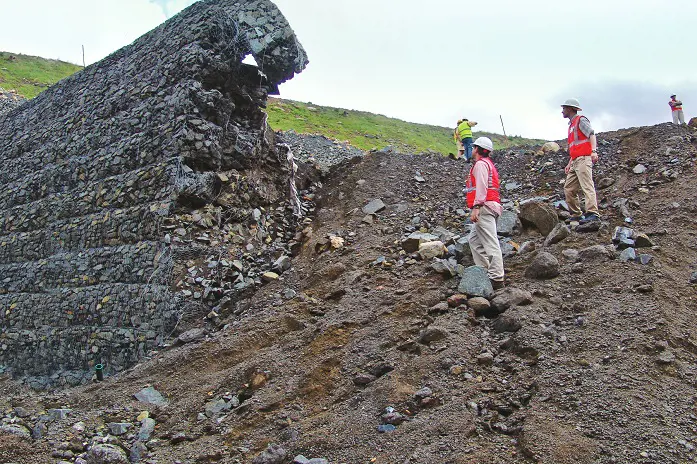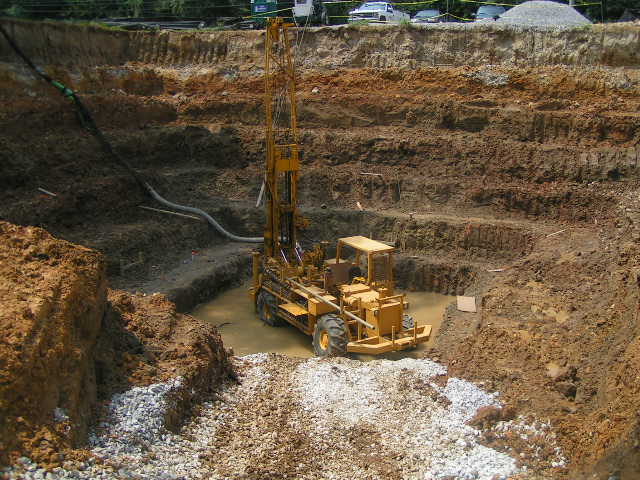How a Geotechnical Specialist Can Make Sure the Success of Your Structure Structures
How a Geotechnical Specialist Can Make Sure the Success of Your Structure Structures
Blog Article
The Value of Geotechnical Engineering in Attending To Environmental Challenges and Enhancing Construction Safety And Security
Geotechnical engineering offers as a foundation in the crossway of ecological stewardship and building and construction safety, providing essential insights right into the habits of soil and rock under different problems. This discipline not just addresses pushing environmental difficulties such as dirt erosion and groundwater security but likewise enhances the robustness of framework versus all-natural dangers. By executing calculated site investigations and customized reduction measures, geotechnical designers play a vital role in guarding both human lives and environmental integrity. The intricacies of these obstacles increase important concerns regarding the future instructions of this field and its ramifications for sustainable growth.

Role of Geotechnical Design
Geotechnical engineering plays a vital function in the layout and construction of infrastructure by addressing the actions of soil and rock materials under numerous conditions. This area of engineering is crucial for comprehending the interaction in between structures and the ground, that includes identifying the load-bearing ability of dirt, analyzing stability, and anticipating possible settlement or failing.
Geotechnical engineers are in charge of conducting website examinations, which involve sampling and testing soil and rock to collect information on their physical and chemical homes. This details is essential for creating structures, keeping wall surfaces, and other earth-retaining structures that make sure safety and durability. Furthermore, geotechnical design notifies the selection of ideal construction approaches and products, thereby minimizing dangers related to soil habits.
In addition, the combination of geotechnical engineering concepts right into city planning and ecological administration is vital for resolving obstacles such as ground contamination and groundwater monitoring. By comprehending geotechnical aspects, engineers can create sustainable remedies that enhance the resilience of framework versus natural threats, while additionally advertising ecological stewardship. Eventually, the role of geotechnical engineering is vital for attaining safe, long lasting, and environmentally mindful building practices.
Dirt Erosion Mitigation
Dirt erosion postures a significant risk to both ecological stability and framework integrity, affecting around 24 billion loads of abundant dirt shed annually worldwide. This phenomenon is intensified by aspects such as logging, urbanization, and bad agricultural methods. Geotechnical design plays an essential function in creating reliable dirt erosion mitigation strategies that guard both the environment and building and construction tasks.
One approach entails the execution of erosion control approaches such as greenery growing, which supports soil through root systems. Additionally, the building of retaining walls and balconies can efficiently lower surface runoff and shield susceptible areas from erosion. Appropriate drain style is also essential; it lessens water buildup and guides excess overflow far from essential structures.
Additionally, geotechnical designers employ dirt stablizing methods, such as the application of geotextiles and naturally degradable mats, to enhance dirt communication and stop destruction - geotechnical companies in south africa. Normal surveillance and analysis of erosion-prone sites allow prompt treatments, guaranteeing lasting sustainability. By incorporating these approaches, geotechnical design not just alleviates the influences of dirt disintegration yet additionally adds to the strength of framework against ecological difficulties, ultimately fostering a much safer and much more lasting developed environment
Groundwater Defense Methods
Groundwater serves as an important resource for drinking water, farming, and industrial procedures, making its defense vital for environmental sustainability and public health and wellness. Effective groundwater security techniques are critical in reducing contamination dangers and making certain the longevity of this source.

Normal tracking of groundwater high quality is additionally vital, making it possible for very early detection of contamination sources and assisting in timely removal initiatives. Utilizing innovative modern technologies, such as geophysical studies and remote noticing, aids in identifying prospective threats to groundwater books.
Additionally, public education and learning and stakeholder engagement are vital, fostering area support for groundwater security initiatives. geotechnical companies in south africa. By incorporating regulative actions, technical improvements, and neighborhood involvement, we can create an extensive framework that safeguards groundwater resources while promoting sustainable advancement and construction methods
Landslide Threat Monitoring
Landslides present substantial threats to both human safety and security and infrastructure, making efficient risk management approaches necessary. Geotechnical design plays an important role in recognizing, analyzing, and mitigating landslide risks. An extensive understanding of slope security, dirt mechanics, and hydrology is essential for creating effective risk management plans.
The very first step in landslide threat monitoring includes extensive website investigations, which consist of geological mapping and soil testing. These examinations aid engineers examine the possibility for landslides by determining essential variables such as slope angles, soil make-up, and water material. Making use of innovative technologies such as remote noticing and geophysical studies can boost the accuracy of these analyses.
Once risks are recognized, suitable mitigation procedures can be applied. These might include engineering options such as keeping walls, drainage systems, and slope stablizing strategies. In addition, checking systems need to be established to discover indications of ground visit the site movement and changes in water degrees, enabling aggressive interventions.

Enhancing Building And Construction Safety
Building and construction sites commonly present a myriad of dangers that can threaten worker safety and project integrity. Geotechnical engineering plays an essential duty in improving building and construction safety and security by providing essential insights right into subsurface problems. Through extensive soil and rock analysis, geotechnical engineers can determine potential risks, such as dirt instability, groundwater concerns, and seismic susceptabilities, which may endanger the safety and security of building and construction tasks.
Carrying out geotechnical solutions, such as proper structure design and the usage of preserving structures, reduces these dangers significantly. These wikipedia reference solutions not only ensure the stability of the frameworks being developed yet additionally develop a safer working setting for building and construction personnel.
Moreover, fostering a culture of safety and security through training and adherence to established safety procedures further enhances construction site safety and security. By integrating geotechnical expertise right into the preparation and execution phases, building and construction jobs can attain higher safety and security standards, ultimately protecting workers and ensuring successful project completion.
Conclusion
In conclusion, geotechnical engineering serves as an important technique in tackling ecological challenges and promoting construction safety. Via efficient soil disintegration mitigation, groundwater security strategies, and landslide risk monitoring, geotechnical designers contribute to the development of resilient infrastructure.
Geotechnical design serves as a cornerstone in the junction of environmental stewardship and building safety, offering vital insights right into the actions of soil and rock under numerous problems. Geotechnical design informs the choice of suitable building techniques and products, therefore decreasing threats hop over to here linked with dirt actions.
Geotechnical design plays a crucial function in establishing effective soil disintegration mitigation strategies that secure both the environment and building tasks.
Additionally, geotechnical designers employ soil stablizing techniques, such as the application of geotextiles and naturally degradable floor coverings, to enhance soil communication and protect against degradation. With comprehensive dirt and rock evaluation, geotechnical engineers can recognize prospective dangers, such as dirt instability, groundwater issues, and seismic vulnerabilities, which may jeopardize the safety of building activities.
Report this page